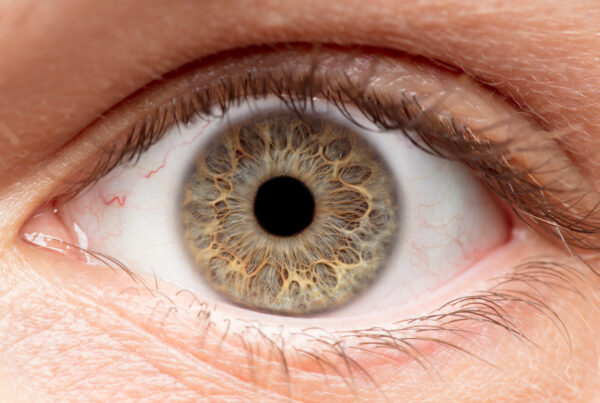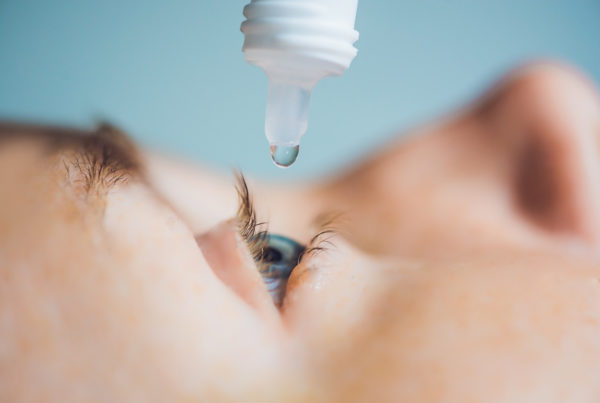
Article written by Dr. Jessica Weis, O.D.
You develop a red eye that persists for a few days and call your eye doctor requesting an antibiotic for an infection, or “pink eye.” Depending on the doctor, they may say no, you must be seen first before anything is prescribed. Why can’t they just send the antibiotic, it won’t hurt, right? While an antibiotic likely won’t “hurt,” there may not even be an infection that an antibiotic would be needed for. Taking antibiotics when not needed increases the resistance of bacteria, making the antibiotic less effective for the general population as time goes on. If the condition causing the red eye requires a steroid or anti-viral to resolve the condition, using an antibiotic will not help and the condition will likely persist and may even worsen. There are MANY ocular conditions to cause a red eye that an antibiotic will not be effective for. While the antibiotic likely won’t do any actual harm to the eye, using one without having the redness evaluated can prolong getting the correct treatment for the eye. With some ocular conditions, the longer it persists the harder it is to treat.
Iritis or Uveitis:
- Iritis, or the synonymous name uveitis, is an inflammation of the inside of the eye. The inflammation is mostly of the iris, or the colored portion. The iris is constantly moving in response to changes in environmental lighting or changes in focus. If it’s inflamed and constantly in movement, this can cause redness, pain, tearing, light sensitivity, swelling, blurry vision, and even floaters. The inflammation may be idiopathic (without cause) or from inflammation from a specific set of autoimmune diseases. This condition requires steroid eye drops to treat and will not improve with the use of an antibiotic.
Herpes:
- Several types of the herpes virus can affect the eye. Once infected, herpes viruses stay in the body and can reactivate with changes in the immune system, illness, stress, sun exposure, hormonal changes, and more.
- Herpes simplex type 1 is the “cold sore” or “fever blister” virus, and about 50% of people under 50 have this virus. It can travel to the nerves that innervate the eye, and cause herpes simplex keratitis, or an inflammation of the surface of the eye (cornea). This can cause redness, pain, tearing, light sensitivity, swelling, and blurry vision.
- Herpes simplex type 2 is the genital herpes virus. This type of virus rarely affects the eye, but also can cause redness, pain, tearing, light sensitivity, swelling, and blurry vision.
- The chickenpox virus, varicella zoster virus, is also a type of herpes virus that commonly affects the eye when it reactivates as shingles later in life. When shingles occurs in or around the eye it is called herpes zoster ophthalmicus, and can cause redness, pain, tearing, light sensitivity, blurry vision, and even floaters. This condition is likely accompanied by significant skin lesions or vesicles, so a bit easier to distinct from pink eye.
- Herpes must be treated with anti-viral medications and will not improve with use of an antibiotic.
Dry eye syndrome:
- Dry eye is caused by many reasons and can cause many symptoms. Most commonly irritation, grittiness, excessive blinking, blurry vision, and sometimes redness. While the moisture of an antibiotic may help slightly, the antibiotic part will likely not. Artificial tears and warm compresses should help improve dry eye, neither of which require a prescription at all and are available over the counter.
Allergic conjunctivitis:
- While allergies also cause similar symptoms of redness, irritation, tearing and/or discharge, swelling, and blurry vision, they tend to cause more itching than other conditions. Allergies may also affect the skin of your eyelids more than other conditions. Allergies usually need an antihistamine and/or mast cell stabilizer drop such as Pataday to treat, which is available over the counter. Severe cases may need a steroid to calm down the initial inflammation. Antibiotics will not improve an allergic response.
Viral conjunctivitis:
- Also known as “pink eye,” viral conjunctivitis caused by several strains of the adenovirus. The vast majority of pink eye cases are caused by a virus. It is a viral infection of the clear covering over the white part of the eye (the conjunctiva), and can cause redness, irritation, tearing or clear discharge, swelling, blurry vision. Antibiotics will not improve a viral infection; it must run its course like the common cold.
Chlamydial conjunctivitis:
- While this type of pink eye is caused by bacteria (which we DO treat with antibiotics), topical antibiotics are not effective in treating this infection. A specific type of oral antibiotic is needed to clear this infection, which can cause a long-term mild redness, irritation, light sensitivity, and blurry vision.
Are you starting to catch on to the similarities in symptoms ALL these conditions can cause, where an antibiotic would be of no use?
So what DO we use antibiotic eye drops for?
Bacterial conjunctivitis:
- Bacterial conjunctivitis, also called “pink eye,” is caused by normal bacteria typically found around the eyelid skin. It’s much less common (as an adult) to have pink eye caused by bacteria and is more frequently seen in children. It is a bacterial infection of the clear covering over the white part of the eye (the conjunctiva), and can cause redness, irritation, tearing and green/yellow discharge, swelling, and blurry vision. Antibiotics will improve a bacterial infection, but we must determine this as the cause before beginning antibiotic drop treatment.
Scratches or abrasions:
- When someone comes into the office with a scratch or abrasion, we often provide an antibiotic drop to protect the wound from becoming infected. The purpose of the antibiotic is to prevent infection of an open wound on the surface of the eye, not to make the scratch heal any faster.
While there are more conditions we would prescribe antibiotic eye drops for, these are the most common. The best treatment is determined at an office visit, after we examine the eyes under a microscope. Without a physical exam, there is truly no way to determine the cause of a red eye without making a guess. If you develop a red eye, you can always try artificial tears for a day or two to see if they help improve the condition, and if not give our office a call for a visit.



